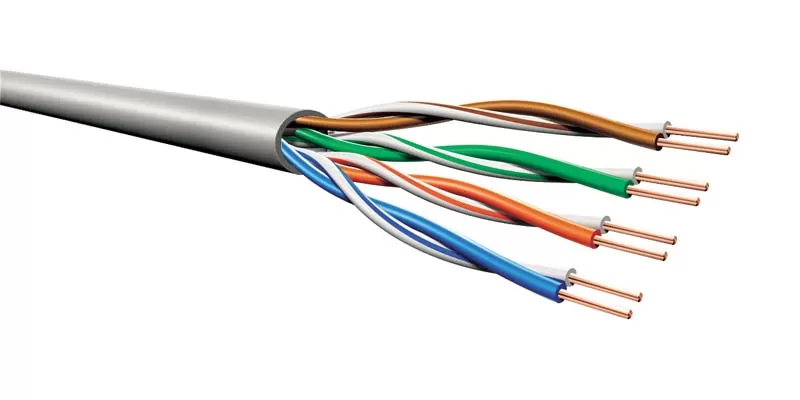UTP and FTP are types of patch cord, a twisted-pair network cable designed for laying a local network between computers, servers and switching equipment. They differ primarily in design.
So:
-
- UTP (Unshielded Twisted Pair) — unshielded. Usually consists of eight cores, combined into four twisted pairs. Each core is covered with PVC insulation and they are all packed in a PVC cambric sheath;
-
- FTP (Foiled Twisted Pair) — shielded. Between the current-carrying cores — usually eight, combined into four twisted pairs — and the sheath is an aluminum foil screen. It is designed to protect against electromagnetic interference.
At first glance, FTP is better than UTP. But not everything is so simple. Let’s figure out which wire is better to use in different situations.
What to choose — FTP or UTP?

All shielded cables, and FTP is no exception, require the shield to be grounded. Moreover, it must be connected to the “ground” at least at two points — at the beginning of the line and its end.
Otherwise, there will be even more interference than usual. An ungrounded or improperly grounded shield acts as an antenna that picks up external electromagnetic fields. As a result, data transmission over such a cable can occur with periodic signal loss or distortion.
Grounding on network cables can be done in two ways. The first option is to solder both ends of the screen to a common ground bus. It is not very correct from the point of view of electricians, but acceptable. The second is the use of switching equipment (servers, network cards, routers and routers) with support for port grounding. This is the most correct option. Nevertheless, this technique is quite expensive, and RJ-45 connectors should be used appropriately, in a metal case, which will be used to connect the ground.
As a result, the scope of FTP cables is limited to highly professional networks where the maximum protection of the transmitted signal is required — and neither money nor technical resources are spared for this. In addition, it should be laid on the streets, including with an open pull, but — again — with the correct connection to the “ground”. For home or general office use, such an Ethernet interface would be redundant if properly connected, and even harmful if not properly connected.
For home and office, it is better to choose regular UTP. It is cheaper and easier to install, and is sufficiently protected from harmful external electromagnetic fields. Of course, it is better not to stretch it near the refrigerator or microwave, but in general, the signal transmission quality is at a sufficient level.

Добавить комментарий
Для отправки комментария вам необходимо авторизоваться.